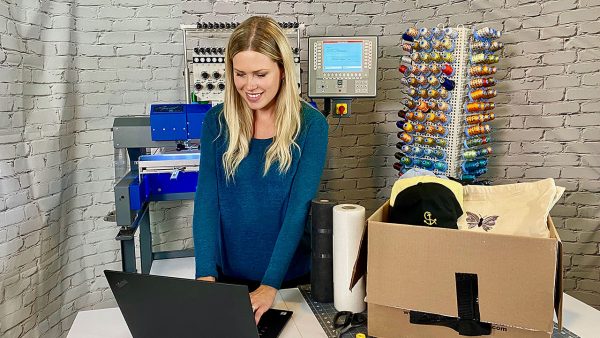
Embroidery has always been a beautiful way to add personality to fabric, but the real magic happens when a simple idea transforms into a stitched masterpiece. Whether it’s a hand-drawn sketch, a company logo, or a favorite photograph, custom embroidery digitizing turns those images into something wearable, giftable, and uniquely yours.
What Is Embroidery Digitizing?
At its core, embroidery digitizing is the process of converting artwork into a digital file that an embroidery machine can read. Think of it like giving the machine a set of instructions—where to stitch, what colors to use, and in what order. Without this step, even the most advanced embroidery machine wouldn’t know how to recreate your design.
But it’s not as simple as uploading an image and pressing “go.” A well-digitized design considers stitch types, density, underlay, and pull compensation (how the fabric might stretch or shift during stitching). Poor digitizing can lead to thread breaks, puckering, or a design that just doesn’t look right. That’s why understanding—or working with someone who understands—the digitizing process is key.
Why Go Custom?
Pre-made designs are great, but custom digitizing opens up endless possibilities. Want your pet’s face on a hoodie? A family crest on a tote bag? A one-of-a-kind logo for your small business? Custom digitizing makes it happen. Unlike generic designs, a custom file is tailored to your exact needs—whether that’s optimizing for a specific fabric, adjusting colors to match brand guidelines, or simplifying complex artwork for cleaner stitching.
The Step-by-Step Journey from Art to Embroidery
- Starting with the Right Artwork
Not all images are created equal when it comes to digitizing. High-contrast, clean-lined designs work best. A detailed watercolor painting might look stunning on paper, but embroidery thrives on bold shapes and defined edges. If you’re starting from scratch, think in terms of simplicity. Fewer tiny details mean a cleaner stitch-out. - Choosing the Right Digitizing Software (or Service)
If you’re tech-savvy, you might dive into digitizing software like Wilcom, Hatch, or Brother’s PE-Design. These programs let you manually plot stitches, adjust densities, and preview how the design will sew out. But if that sounds overwhelming, professional digitizing services handle the heavy lifting. You send your artwork, they fine-tune it for embroidery, and send back a machine-ready file. - Mapping Out Stitch Types
Not all stitches are the same. Satin stitches (smooth, shiny columns) work great for text and borders, while fill stitches (tight, textured areas) cover larger spaces. A good digitizer knows when to use each type and how to layer them for the best effect. - Testing and Refining
Even pros test their designs before finalizing. A small sample stitch-out reveals issues like thread tension problems, gaps, or areas that need more (or less) density. Tweaking the file at this stage saves time, thread, and frustration later. - Stitching the Final Piece
Once the file is perfected, it’s time to embroider! The right fabric, stabilizer, and needle all play a part in the final look. A sturdy denim or canvas holds up better than stretchy knits, and using cutaway stabilizer prevents puckering on tricky fabrics.
Common Pitfalls (And How to Avoid Them)
- Too Much Detail: Tiny text or intricate shading can turn into a blurry mess. Simplify where possible.
- Ignoring Fabric Type: A design digitized for thick twill won’t sew well on thin polyester. Always consider the end material.
- Skipping the Test Run: Even a 30-second sample stitch can reveal problems before you waste hours on a big project.
DIY vs. Professional Digitizing
If you love learning new skills, DIY digitizing can be rewarding (and save money on small projects). But for logos, intricate designs, or bulk orders, a professional digitizer is worth every penny. They’ll optimize the file for durability, stitch count, and visual impact—things that take years to master.
The Future of Custom Embroidery
Technology keeps pushing boundaries. AI-assisted digitizing, faster machines, and more intuitive software are making custom embroidery accessible to everyone. Whether you’re a hobbyist stitching gifts or a business branding uniforms, the ability to turn any idea into thread has never been easier.
Final Stitch
Custom embroidery digitizing bridges imagination and reality. It’s where art meets craft, and a simple concept becomes something tangible. Whether you’re digitizing yourself or collaborating with a pro, the result is the same: a unique, stitched creation that carries your vision—one thread at a time.
So, what will you turn into stitches next.





